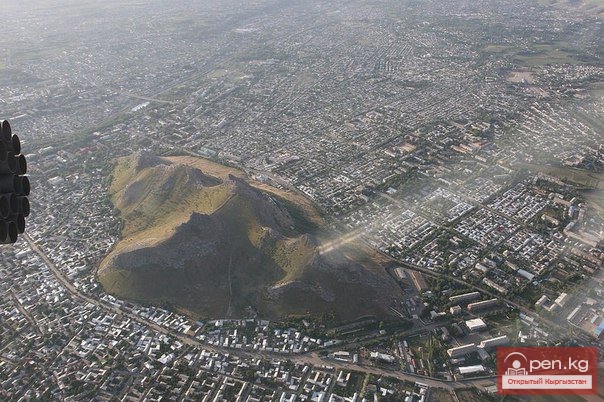OPEN-AIR MUSEUM
The land of Issyk-Kul is rich not only in legends and myths of the past. A vivid example of this is the open-air museum on the northern outskirts of Cholpon-Ata.
The "exhibits" consist of about 900 stones with petroglyphs. The drawings mainly depict goats with spiral horns curled back. Some clearly show sacrificial animals and figures of camels led by caravan drivers. The scenes of hunting and games-competitions are interesting and diverse — there are horsemen in pursuit of prey and a group of hunters driving a large deer.
The craftsmanship with which the petroglyphs are made is astonishing. There are two techniques used — engraving and dot work. Most of the images are executed in the so-called "Scythian-Siberian animal" style.
Findings from burial mounds excavated by archaeologists on the museum's territory have allowed researchers to determine that the majority of the petroglyphs belong to the Saka-Usun period (1st millennium BC - the turn of the era). In addition to Cholpon-Ata, significant clusters of "drawings on stones" can also be found along the southern shore of the lake and on the ceiling of the Ak-Chunkur cave.
The Cholpon-Ata open-air museum is among the largest concentrations of petroglyphs in Semirechye.
If you approach Karakol from the side of the N. M. Przhevalsky Memorial Complex along III International Street, you can see a magnificent architectural monument from the early 20th century — the Dungan Mosque, built by immigrants from Eastern Turkestan, who used the experience and skills of traditional Dungan wooden architecture.
The mosque was constructed using Tien Shan spruce, black locust, and local poplar, with walnut used for decoration.
Preparatory work lasted about three years.
For the carved patterns of the cornices, ornaments and motifs inspired by folk mythology were used — fantastic dragons, phoenixes, and lions, which, according to popular legends, protect the building from disasters and evil spirits.
In folk mythology, each color has a specific meaning: red protects against evil spirits and disasters, yellow brings wealth and greatness, and green brings well-being and happiness, which is why the coloring of the building, the material, and the roof color in Dungan architecture were strictly regulated. All wooden parts and columns were painted red, the walls — purple, and the roof — green, with carved structures in two colors: plant patterns (grapes, pomegranates, pears, and peaches) in green, and mythological animals in yellow.
Another religious monument — the Trinity Orthodox Church is located in the city center and was built in 1894-1895 on the site of a five-domed brick church destroyed during an earthquake in 1876. The preserved foundation, which has a square plan of the main volume, was used in its construction.
Until the mid-1930s, the church belonged to the believers, then it housed a children's sports school. As a result, the building was significantly rebuilt, with the domes and bell tower dismantled. During the Great Patriotic War, the building was returned to the believers, but in 1957 it was once again adapted for a children's sports school. Currently, the church has been restored, and services are held there.
On the southern shore of Issyk-Kul, there are stone boulders with the magical Buddhist inscription "Om mani padme hum." The most famous are the inscriptions on four stones located about 1 km apart in the Tamga Gorge, 5-7 km from the lake.
The stone closest to the lake is popularly known as "Tamga-Tash" ("Stone with a Stamp"). It is believed that this inscription belongs to one of the beloved heroes of oral folk art, who allegedly split the stone in half with his saber and "recorded" the number of trophies obtained from enemies on it.
Like many other toponyms of Issyk-Kul, the name "Tamga" is shared by a river, gorge, settlement, and a well-known resort in the beautiful bay of the same name.
Sights of Issyk-Kul Region














































